Search
Did you mean: Greek Fire?
Search Results

Image
Greek Erotic Scene
Attic ceramic kylix or drinking cup (490-480 BCE) depicting an erotic scene. The male holds a sandal, often used as an instrument for stimulation in erotic games. (Archaeological Museum, Milan)
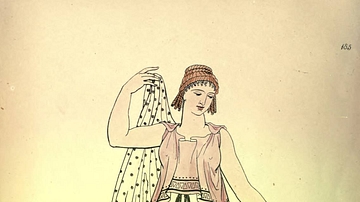
Image
Greek Woman
Grecian Female from a fictile vase.

Image
Greek and Phoenician Colonization
Both the ancient Greeks and Phoenicians extensively colonized vast areas of Europe, along the Mediterranean and Black Sea coasts. In doing so, they spread their culture, which strongly influenced the local tribes. For the Greeks, this is...

Image
Greek Expansion in the Ancient Aegean
A map illustrating the trends and directions of the expansion of the ancient Geeks across the Aegean during the so-called Greek Dark Ages in the wake of the collapse of the Mycenaean civilization. During the 1100s BCE, fueled by a variety...

Image
The Nine Muses of Greek Mythology
An infographic depicting the nine Muses of Greek mythology. The Muses are a group of divine sisters who govern various aspects of creativity and intellectual pursuits. Originally, the ancient Greeks recognized three Muses: Melete, Mneme...
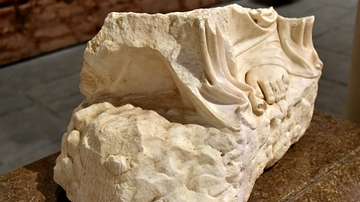
Image
Greek Artist's Signature
The sculptor's signature, written in Greek, can be seen on the base (left) of this marble statue. The text reads "Antoninus Alexandreus, son of Antiochos, made this by himself". The statue may be of Apollo or a muse. The name Antoninus Alexandreus...
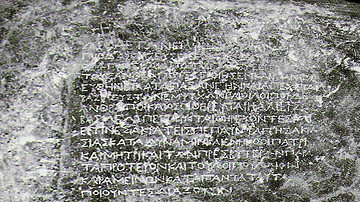
Image
Greek and Aramaic inscriptions by king Ashoka
Bilingual (Greek and Aramaic) inscriptions by king Ashoka at Kandahar (Shar-i-kuna). (3rd century BCE). Preserved at Kabul Museum. Today disappeared. Two-dimensional inscription. Greek (transliteration) 1. δέκα ἐτῶν πληρηεὺς...
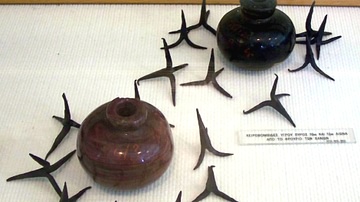
Image
Greek Fire Grenades
Two clay grenades which were designed to be filled with the flammable liquid known as Greek Fire and launched at the enemy. Greek Fire was first used in the Byzantine empire in 678 CE. These examples date to between the 10th and 12th century...
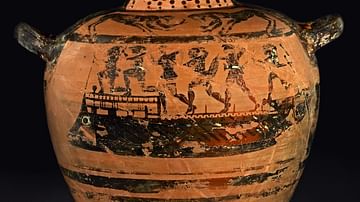
Image
Greek Bireme on an Etruscan Water Jar
Black-figure hydria from Vulci, Etruria, attributed to the Micali Painter, c. 510-500 BCE. The British Museum, London This Italiote reproduction of the Greek naval invasion of Troy based on the Iliad is shaped around a bireme (diiris...
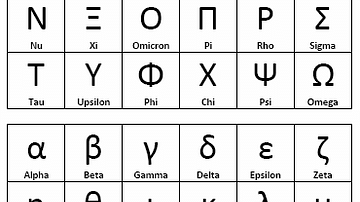
Image
Greek Alphabet
Modern version of the Greek alphabet.